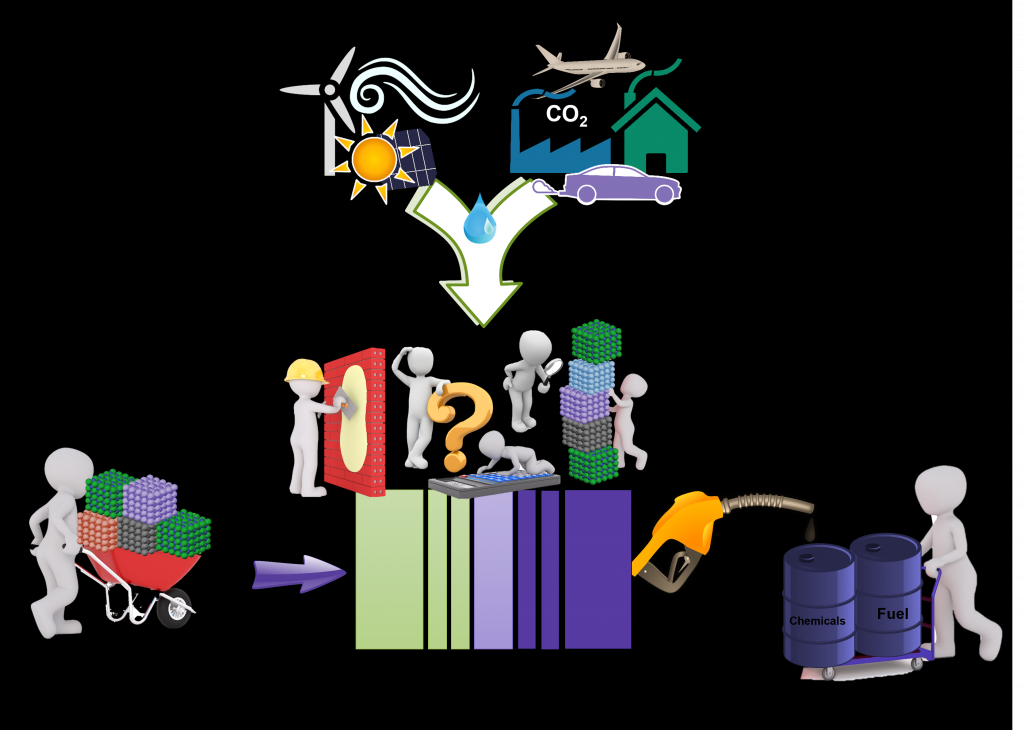“Bringing Together the Best Features”
We strongly believe that our endeavours in green energy and robotic research hold great importance for both the scientific community and society as a whole. Our ultimate objective in pursuing these cutting-edge fields is to make a valuable contribution towards creating a world that is more sustainable, equitable, and technologically advanced, thereby benefiting future generations.
Research Line 1: Green Energy: Paving the Way for a Sustainable Future
The issue of energy and the environment is a significant concern in today’s world, and the challenges related to materials are particularly intriguing. Developing multifunctional and smart materials for sustainable energy technologies is a complex and vital task because these materials are essential in providing the necessary technological solutions for a sustainable energy future. The subject is driven by the need to generate, consume, store, and secure the supply of energy. As the limitations on the performance and cost of energy conversion and storage systems are primarily due to the materials used, there is an urgent requirement for the development of new functional materials for the next generation of such systems.[1]
Our studies have shown that by regulating the accessible surface area of electrocatalysts through structural and compositional modulations, their activity can be enhanced, and they can become more effective in the selective production of specific chemicals. For instance, by fine-tuning the morphology of electrocatalysts, a Faradaic efficiency of over 95% was achieved in the production of formic acid.[2] Additionally, the production of C4 products using Cu catalysts has also been successfully achieved which is a significant breakthrough in the field.[3] Our research seeks to overcome the current challenge (selectivity, stability and activity) by focusing on the engineering of the active sites and developing smart multifunctional nanomaterials with unique physical and chemical properties that enhance catalytic performance. We aim to gain a mechanistic understanding of relevant energy conversion reactions in order to guide the design of more effective catalysts. The current focus of our research lies in the development of biomass-derived carbon materials and MXene-based hybrids for the purpose of water splitting and CO2 reduction. These materials are crucial for developing sustainable energy technologies that can reduce greenhouse gas emissions and support the transition to a circular and low-carbon economy.
CO2 Reduction:

H2 Generation

References:
- Journal of Materials Chemistry A 5, 18, 8230 – 8246, 2017. DOI: 10.1039/C6TA09875D.
- ChemSusChem. 14, 3402, 2021. DOI: 10.1002/CSSC.202101122.
- ACS Catalysis 12 – 2, 1558 – 1571, 2022. DOI: 10.1021/ACSCATAL.1C03629.
Research Line 2: Artificial self-propelled nano/microrobots
Synthetic nanorobots, or microrobots, have garnered significant attention in recent years for their potential applications in the fields of environmental and biomedical engineering. These tiny machines can be designed to perform a wide range of tasks, from removing pollutants from the environment to delivering drugs directly to diseased cells in the body. In the field of environmental engineering, nanorobots can be used to remove harmful pollutants from the air, water, and soil. For example, nanorobots can be designed to selectively bind with and remove heavy metals or other toxic chemicals from contaminated water sources. This technology has the potential to revolutionize the way we clean up polluted sites and protect our natural resources. In the field of biomedical engineering, nanorobots offer tremendous potential for drug delivery and targeted therapy. By designing nanorobots that can travel through the body and selectively target cancer cells, for example, we can potentially deliver highly effective treatments with fewer side effects. Additionally, nanorobots can be used to monitor and diagnose diseases, detect pathogens in the environment, and even help with tissue engineering and regenerative medicine. The field of synthetic nano/microrobots is still in its early stages, and despite its great progress, there are several challenges and limitations that researchers are currently facing including limited mobility, communication with each other or with a central control system to coordinate their actions, fabrication procedure, material limitation and safety. These challenges need to be addressed before these tiny machines can be widely used.
In this regard, we have focused on developing programmable functional microrobots for environmental and biomedical applications. By using electrochemical triggers,[4,5] we have created microrobots that are capable of intelligent capsulation, self-navigation, and controlled release of substances. Our proof-of-concept projects have shown that these robots have the potential to revolutionize decontamination processes, resulting in more efficient remediation protocols with lower costs and shorter clean-up times.[6-9] Additionally, we have demonstrated that these robots can respond to chemical environments and even interact with each other.[10] We believe that the development of synthetic nano/microrobots that overcome the current limitation holds great promise for improving both the environment and human health. By harnessing the power of these tiny machines, we can potentially create a cleaner, healthier world for generations to come.

Microcleaners in a) blood and b) polluted waters.
References:
- Advanced Functional Materials 29, 1806696, 2018. DOI: 10.1002/ADFM.201806696.
- ACS Applied Materials and Interfaces 11, 14, 13359 – 13369, 2019. DOI: 10.1021/ACSAMI.8B19408.
- Advanced Materials 31, 1806530, 2019. DOI: 10.1002/ADMA.201806530.
- Nanoscale 11, 18, 8825 – 8834, 2019. DOI: 10.1039/C9NR02211B.
- Small 16, 2002111. 2020. DOI: 10.1002/SMLL.202002111.
- Angewandte Chemie International Edition 131, 38, 13474 – 13478, 2019. DOI: 10.1002/ANIE.201906642.
- Nature Machine Intelligence 2 – 11, 711 – 718, 2020. DOI: 10.1038/S42256-020-00248-0.